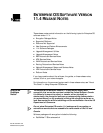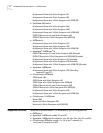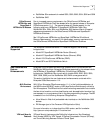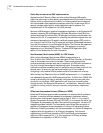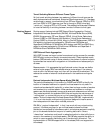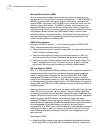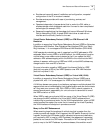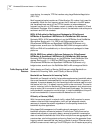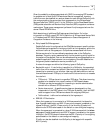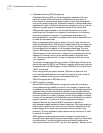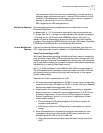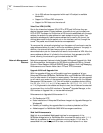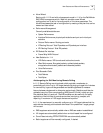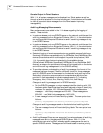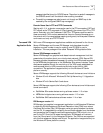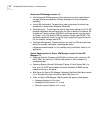
New Features and Feature Enhancements 15
Given the scalability problems associated with RSVP, the emerging IETF standard
for scalable end-to-end QoS–IP Differentiated Service is supported. Incoming
traffic flows can be classified into service classes for each defined QoS policy with
the routers providing the service level that corresponds to the Differentiated
Services Code Point (DSCP), bits 0-5 in the TOS-byte, via the Class-Based Queue
(CBQ) packet scheduler and Random Early Detection (RED) congestion avoidance
mechanisms. These queue management policies will only be supported over the
slower FR and PPP WAN links.
Brief descriptions of additional QoS features are listed below. For further
information on IPQoS, consult RFC 2474 (Definition of Differentiated Service Field
in IP Headers) and RFC 2309 (Recommendations on Queue Management &
Congestion Avoidance in the Internet).
■ Policy-based QoS Management
Flexible QoS control is configured via the IPQoS Service as port specific policies.
QoS policies can be applied to the inbound traffic at the ingress port and/or the
outbound traffic at the egress port. QoS policies are associated with flows.
Policies are stored in the user-defined precedence order in the QoS policy
database. The policy action associated with the first matching policy found for
the packet will be applied. Flow can be defined as either an aggregated flow or
a specific application flow between two end systems. Flows are classified via
the generic packet classification service provided by IP.
A network manager can define the following types of QoS policy:
■ Bandwidth control - If rate limiting is specified in a QoS policy, the associated
traffic flow will be metered and policed. Rate limiting can be applied to traffic
transmitted or received on an interface. User may also define actions, such as
forward/discard/remark TOS-byte, to handle traffic that conforms to or exceeds
the rate limit.
■ TOS control - TOS can be set to a specified TOS value. This allows incoming
packets to be classified into a small number of DSCP-based classes.
TOS-byte can also be remarked for forwarding to another administration
domain with a different IP/TOS convention.
■ Service class control - A specific service class can be assigned to a flow
independent of the DSCP value in the TOS byte. By default, the 6-bit DSCP
value is mapped into a CBQ service class at the outgoing WAN port.
■ Traffic redirect - traffic can be redirected at the ingress port.
■ IEEE 802.1P Prioritization
When the ingress port is connected to a VLAN-aware switch that does the
layer-2 packet classification and 802.1P user priority support is enabled on the
ingress VLAN port, the 802.1P user priority of the incoming IP packet will
determine the IP/TOS value based on the default or user-configured mapping.
When the egress port is connected to a layer-2 VLAN-aware switch that does
not support packet classification and 802.1P support is enabled on the egress
VLAN port, the IP/TOS value will determine the 802.1P priority of the outgoing
packet based on the default or user-configured mapping
IP traffic can also be classified via a QoS policy to be tagged with a specific
802.1P priority.



